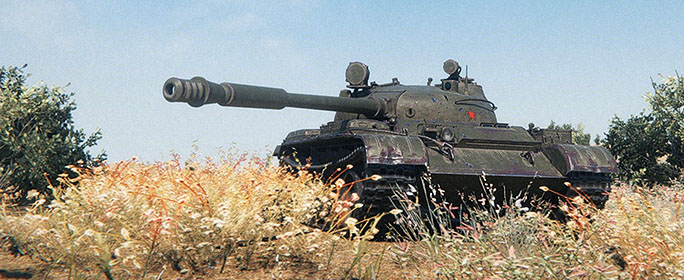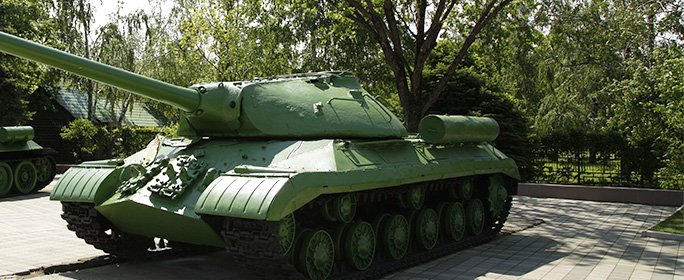Update 9.9 Graphics Changes

In World of Tanks Update 9.9, graphics rendering sees extensive improvements. Methods of anti-aliasing were updated, shadows were significantly modified, and lighting improved -- all to improve client performance and overall image stability (such as less undesirable "twinkling" in light effects). Here we'll describe the implemented changes and show you the progress made. Word to the wise: it's about to get a little geeky.
New Anti-Aliasing
Anti-Aliasing is a technique used to remove the perceptible rough edges on objects. With Update 9.9, a new method of full-screen anti-aliasing was introduced into the game: Temporal Super Sampling Anti-Aliasing (TSSAA).
Of all anti-aliasing techniques, TSSAA is known for its excellent quality and general stabilization of images. It removes visual noise and "pixel vibration" on thin objects.
Unlike fast approximate anti-aliasing (FXAA), which is already used in World of Tanks, TSSAA is a highly efficient temporal method that applies anti-aliasing not only to the current frame, but also to some frames that were rendered before, restoring old positions of pixels by using their velocity. This allows the creation of smoother and more cinematic-looking images in the game, just slightly increasing the load on the video card.
Unlike TXAA, TSSAA is not confined to a particular manufacturer and works for the entire spectrum of video cards that support these improved graphics. In 9.9, TSSAA was written from scratch in order to adapt it to the BigWorld engine modifications used for World of Tanks.
The TSSA algorithm will be available in two variants: TSSAA-LQ is a lighter variant of the new anti-aliasing method where fewer previous frames are used during image processing. TSSAA-HQ is the highest quality anti-aliasing method.
Full-size screenshots: No AA | FXAA | TSSAA-LQ | TSSAA-HQ
New Shadows
Update 9.9 also brings revised shadows. This resuls in higher quality yet reduced load on the processor and video card.
- With the new shadows algorithm, there is no calculation of shadows from static objects on every frame. It also brings "soft shadows" without creating any additional CPU load. This feature is called Variable Penumbrasoft Shadow (a realistic optical effect of shadow blurring, occurring as the distance from the source object increases)
- Shadows from dynamic objects become much lighter and also feature "soft shadows" at maximum settings
- Contact Shadows, or Ambient Occlusion, was also improved. Previously, they were reproduced by the Horizon-Based Ambient Occlusion (HBAO) algorithm in the game. For 9.9, the HBAO algorithm was rewritten and streamlined, which increased quality and temporal stability.
- HBAO was rewritten and streamlined, increasing quality and temporal stability
- For players who choose medium graphics settings, HBAO was replaced with a simpler but very quick and high-quality Screen Space Ambient Occlusion (SSAO) algorithm, which contributes to better performance
Soft Shadows Example
Click and drag the slider!
Full-size screenshots: 9.8 | 9.9

This photo illustrates the optical effect of increasing the blurring of shadows with increasing the distance to the source of the shadow. On the right of the photo there are visible blurred soft shadows cast by the tree, while the shadow of the tank is more contrasted because the object (the source of the shadow) is closer.
New Lighting
Also improved is the Bidirectional Reflectance Distribution Function (BRDF). It is responsible for the way light is reflected at different angles, or absorbed by the surface, depending on its roughness (known as a micro-relief). The new lighting model is called GGX (Microfacet BRDF with a GGX distribution). As a cutting-edge real-time rendering technology, it ensures the best physical accuracy. Changes in the lighting model enable more realistic simulation of a wider range of materials and will be particularly noticeable on tank models redesigned for HD quality.
BRDF Example #1
Click and drag the slider!
Full-size screenshots: 9.8 | 9.9
BRDF Example #2
Click and drag the slider!
Full-size screenshots: 9.8 | 9.9
For the new lighting model, an RO (Reflection Occlusion) algorithm was written, as it was required to remove the artifacts that arise when reflected light passes through opaque objects. Put simply, Reflection Occlusion removes light reflection from places it shouldn't be.
Bloom has also become much more stable at the maximum post-processing settings:
Bloom Example
Optimizations
Besides optimized shadow calculations, Update 9.9 introduces numerous system optimizations in the graphics engine that reduce processor load when creating static objects, trees and other foliage, and other effects.
Update 9.9 also features redesigned graphics setting toggles, and a simpler scheme for creating fog and bloom.
